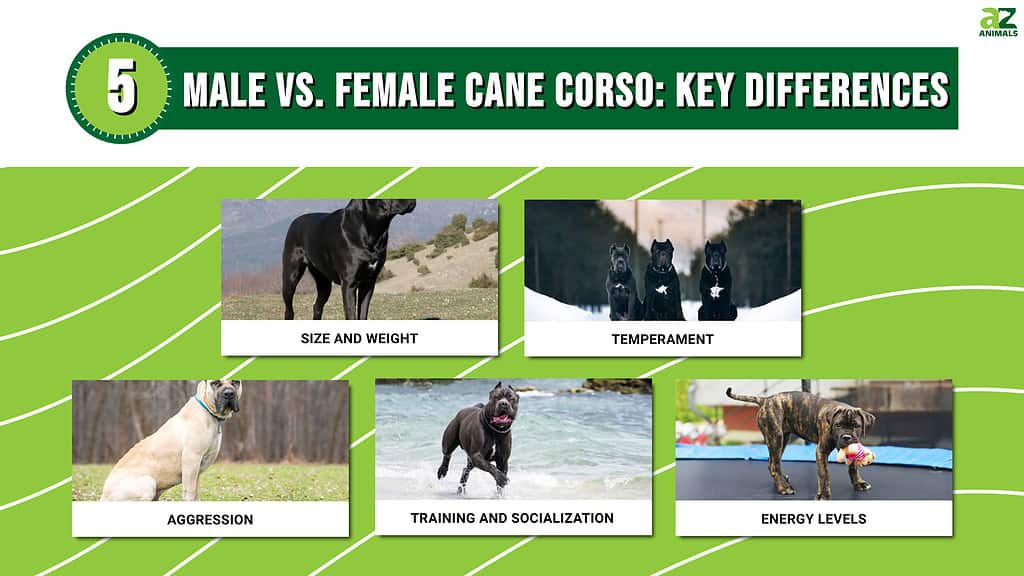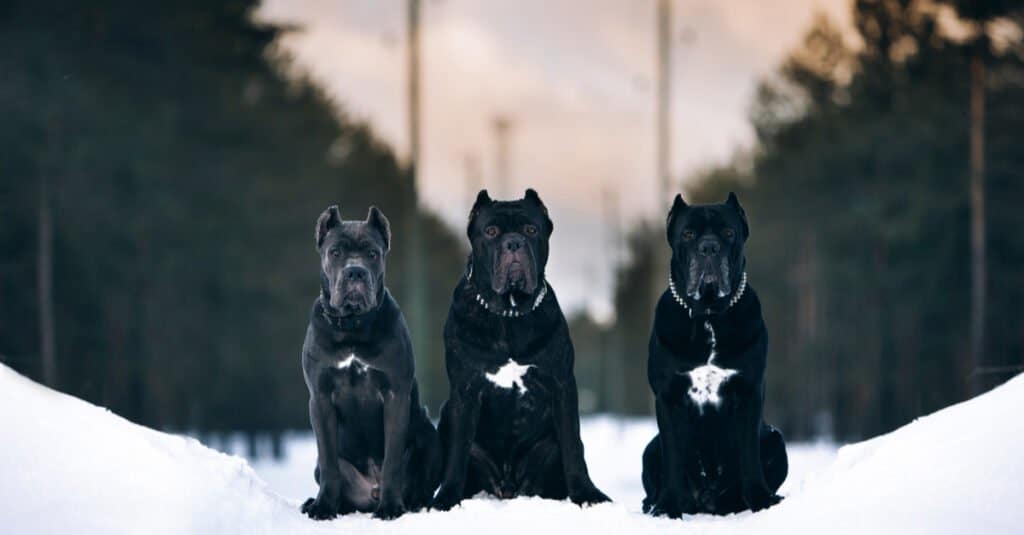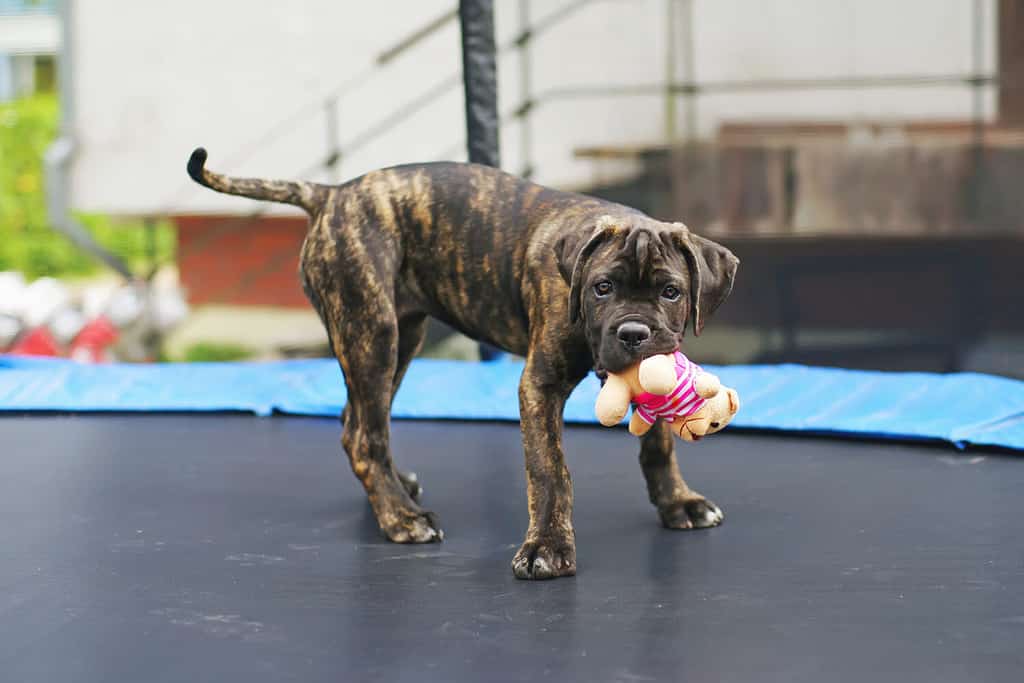
Cane Corsos are known for their strength and loyalty. They’re very large Italian dogs that were bred for protective purposes. Therefore, they’re still very imposing and towering today.
While there are some differences between the males and females of this breed, they are mostly the same. Males are a bit bigger, but that is the biggest difference. Individual personalities and characteristics will vary from individual to individual. They do not necessarily have anything to do with their sex.
Key Differences Between Male vs. Female Cane Corso
Let’s take a look at the differences between these two sexes below, though they are minor. Remember, every dog is an individual, so these traits aren’t necessarily set in stone.
| Aspect | Male Cane Corse | Female Cane Corse |
|---|---|---|
| Size & Weight | Larger & heavier | Slightly smaller |
| Temperament | More assertive | More protective |
| Aggression | Dominance tendecies | Dominance tendencies |
| Training & Socialization | Consistent cues vital | May need extra socilaization |
| Energy Levels | May be slightly lower | May need extra socialization |
1. Size and Weight

Cane Corsos are just
bigdogs in general.
In many dog breeds, males tend to be larger and heavier than females. This is also generally true for the Cane Corso. Adult male Cane Corsos typically weigh between 100 to 120 pounds (45 to 54 kg) and stand around 25 to 27.5 inches (64 to 70 cm) tall at the shoulder.
Adult females are usually slightly smaller, weighing between 80 to 100 pounds (36 to 45 kg) and standing around 23.5 to 26 inches (60 to 66 cm) tall.
Of course, sizes can vary, and not all males are larger than females. Therefore, even this varies somewhat, though it is the most “definite” difference between these dogs.
2. Temperament

Cane Corsos are known to be empathetic and loyal in nature regardless of gender.
©BoJack/Shutterstock.com
Both male and female Cane Corsos are known for their protective and loyal nature. However, there can be some differences in temperament between the genders.
Males might be more assertive and dominant, especially around other dogs of the same sex. Females might exhibit more territorial behavior, especially if not spayed, and can be more protective of their home and family. But this isn’t very set in stone at all.
Males are more likely to wander, as they may be on the lookout for in-heat females. However, females will also wander when they are in heat. They may also go through more hormonal changes as their hormones go up and down with their cycle.
3. Aggression

It’s important to note that while Cane Corsos are generally not aggressive without reason, they are naturally protective dogs.
Male Cane Corsos, especially intact (unneutered) males, might be more prone to territorial and dominant behavior, leading to aggression if not properly trained and socialized. Female Cane Corsos might show aggression if they feel their pups or territory is threatened.
Generally, these dogs are just protective individuals. Therefore, working on socialization and training from an early age is important.
Male Cane Corsos tend to be more aggressive towards other males, while females tend to be more aggressive towards other females. Therefore, while they can be kept together, it’s best if differing genders are chosen.
4. Training and Socialization

Cane Corso dogs need proper training and socializing regardless of the gender of the dog.
©Sbolotova/Shutterstock.com
Both male and female Cane Corsos require proper training and socialization from a young age. Early training and exposure to various people, animals, and environments are crucial for a well-adjusted adult dog. There is perhaps nothing more important than socialization for this breed.
Males might require slightly firmer handling due to potential dominance tendencies, while females might need careful training to manage protective behaviors. However, they tend to be pretty similar regarding training needs.
5. Energy Levels

Despite being large, these dogs have moderate activity levels, especially as puppies.
©Eudyptula/Shutterstock.com
Energy levels can vary among individual dogs, but females might generally have slightly higher energy levels than males. This is because they are smaller, and smaller dogs tend to be more energetic than larger dogs.
For instance, a smaller female may be more active than a larger male.
However, this difference might not be very pronounced and can easily be managed with proper exercise and mental stimulation. These dogs don’t have high energy needs, anyway. Having a male instead of a female may only shave 3 minutes off your daily exercise routine – not enough to really matter.
Ready to discover the top 10 cutest dog breeds in the entire world?
How about the fastest dogs, the largest dogs and those that are -- quite frankly -- just the kindest dogs on the planet? Each day, AZ Animals sends out lists just like this to our thousands of email subscribers. And the best part? It's FREE. Join today by entering your email below.
Thank you for reading! Have some feedback for us? Contact the AZ Animals editorial team.








